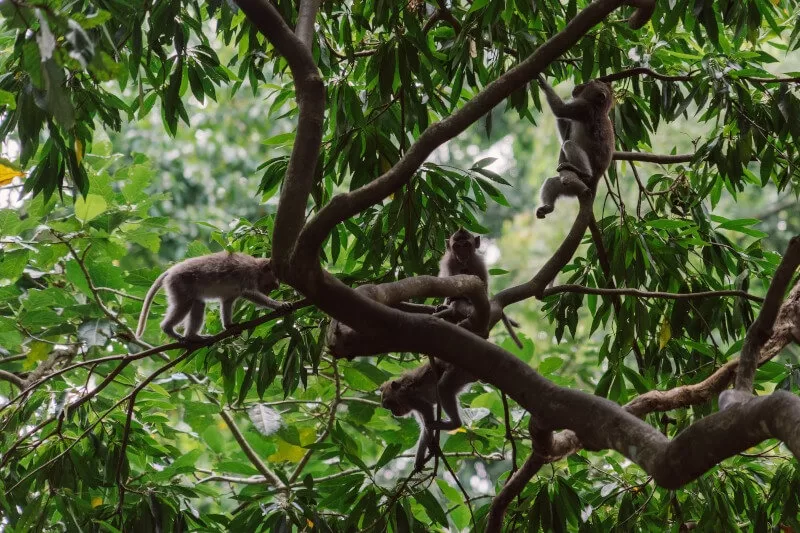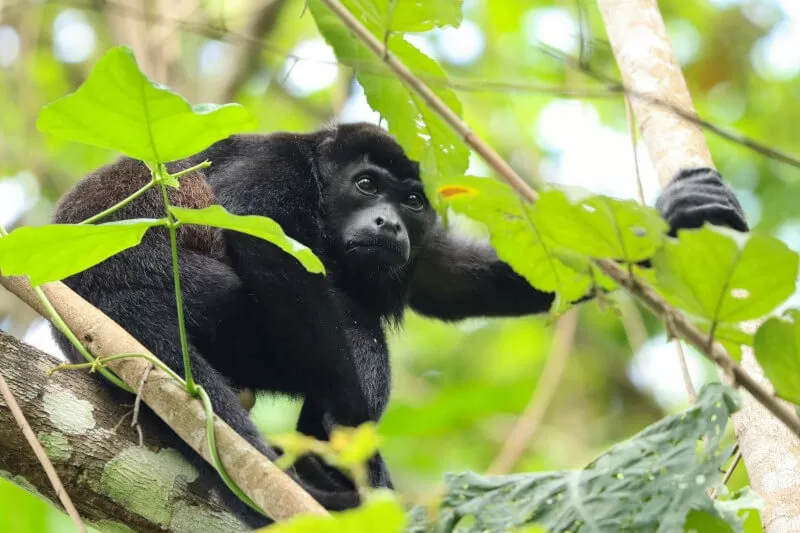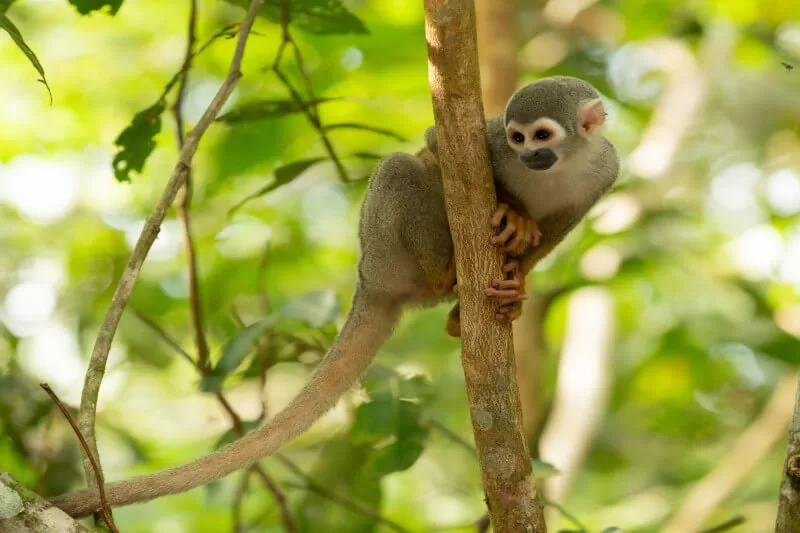In the lush South America, monkeys in Manu thrive. These primates swing through an untouched Amazonian paradise. Their world is a spectacle.
From tiny tamarins to howler monkeys, diversity astonishes. Each species reveals unique survival tactics. This wild tapestry is rich and vibrant.
Visitors marvel at their complex societies. Studying them offers insights into evolution. Manu’s monkeys are both mysterious and familiar.
Trekking through Manu unveils a primate haven. Here, monkeys in Manu leap amidst emerald canopies. Observers spot them easily.
Manu’s canopy walks offer unrivaled views. High above, diverse monkeys navigate the treetops. Their agility in the wild impresses all.
New World monkeys dominate this region. Capuchins use stones to crack nuts. This showcases their intelligence and adaptability.
Spider monkeys display their long, prehensile tails. They grasp branches, moving with remarkable grace.
Squirrel monkeys roam in large, noisy troops. Their playful antics delight the onlookers.
Manu’s rare species also attract attention. The enigmatic woolly monkeys move quietly. They demonstrate a shyer aspect of the monkeys in Manu.
Titi monkeys, with their monogamous bonds, cuddle. Their affectionate nature provides a softer view.
Night monkeys emerge at dusk. Their large eyes pierce through the twilight.
Each monkey plays a vital role. They disperse seeds, aiding forest regeneration. They connect the web of jungle life.
Predators rely on these primates for survival. Thus, preserving them is critical for the ecosystem. Manu’s conservation efforts become evident here.
The monkeys here display complex behaviors. They communicate with diverse vocalizations and gestures.
Social hierarchies within groups fascinate researchers. Manu’s primates are not just surviving. They are thriving, a testament to conservation.
The monkeys of Manu tell a story. They embody the pulse of the Peruvian Amazon Rainforest. They make Manu a primate wonderland.

Monkeys in Manu display fascinating behaviors. Their social dynamics captivate all who observe. Researchers find endless subjects to study.
The animals of Manu National Park live freely. Monkeys in Manu form complex social structures. These hierarchies govern their daily interactions. Leaders emerge, maintain order, and guide groups.
Females often nurture young across family lines. This cooperation ensures group survival and cohesion.
Interactions among them can be playful or stern. They groom each other, strengthening social bonds. Play-fighting among juveniles develops skills and relationships.
Communication is key in their communities. They use vocalizations to alert, inform, and bond. Gestures and facial expressions are equally telling.
Conflict is also part of their world. Disputes over food or mates occur. Yet, they often resolve conflicts with grooming. Such behavior underscores their intelligence and adaptability.
The legends and folktales of the Amazon Basin echo the primates’ traits. They speak of trickery, wisdom, and kinship. These stories draw inspiration from real monkey antics.
Local cultures have long revered these creatures. They see them as integral to the forest’s spirit.
In Manu, primates contribute to the forest’s health. They disperse seeds, aiding in plant diversity. Their role in the ecosystem is undeniable.
Predators keep their populations in check. This balance is crucial for the forest’s vitality.
Monkeys in Manu are key for ecological studies. Observing them helps us understand primate evolution. Their behaviors offer a glimpse into our own ancestry.
Monkeys in Manu, through their daily lives, provide valuable insights. They remind us of the interconnectedness of all life.

Protecting Manu’s monkeys faces tough challenges. Habitat destruction poses a significant threat. Illegal logging disrupts their delicate ecosystem.
Poaching also endangers these primates. It depletes populations, weakening genetic diversity. Monkeys in Manu need safe habitats to thrive.
Conservation efforts work to curb these threats. Protected areas limit destructive human activities. Education programs raise awareness about their plight.
Climate change introduces new risks. Altered rain patterns affect food availability.
Monkeys in Manu Reserved Zone must adapt or perish. Researchers study how changing climates affect them. This knowledge guides conservation strategies. It ensures that actions taken are effective.
Tourism, while beneficial, must be eco-friendly. Visitors should respect the monkeys’ natural habitat. Responsible tourism supports conservation financially.
Local communities play a vital role. They become stewards of their natural heritage. Sustainable practices help both humans and wildlife.
International collaboration is crucial for success. Partnerships amplify conservation impact. They bring resources and expertise to the table.
The fight to save Manu’s monkeys is global. It requires a concerted, global effort.
Manu’s monkeys are not just Peru’s treasure. They are a global responsibility and joy. Ensuring their future requires immediate action. Every effort counts, every action matters.
Interested in contributing to conservation? Take a Manu Rainforest Tour or a Manu Amazon Tour. Your visit supports local initiatives.
Experience the wonders of Manu. See how you can make a difference. Join the effort to protect these precious creatures.

If you got any questions, please do not hesitate to send us a message. We reply within 24 hours!
+51 900 394 399
info@biomanuexpeditions.com
reservas@biomanuexpeditions.com
